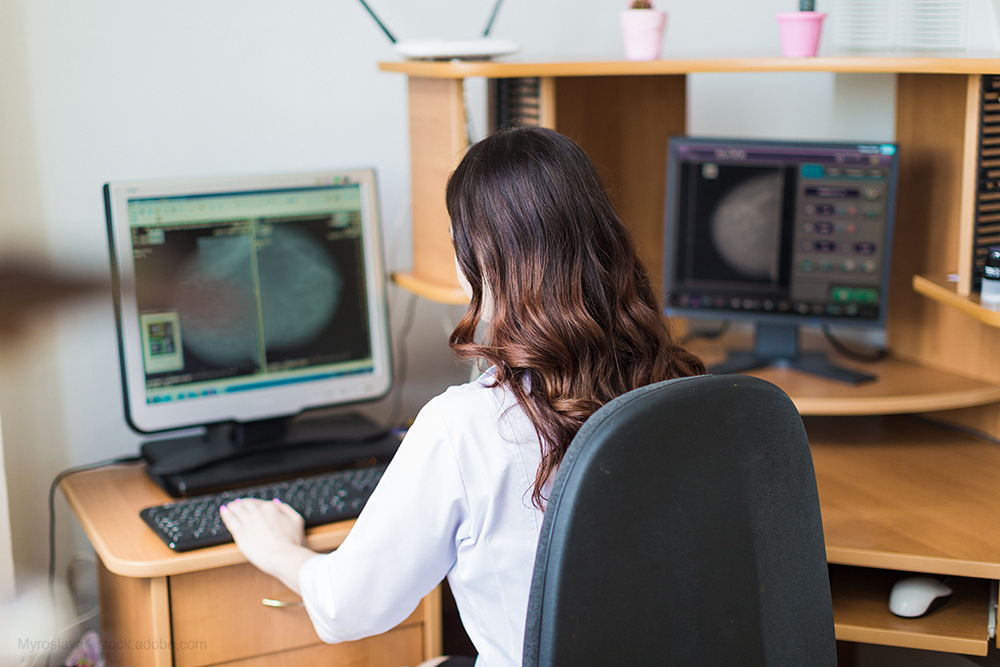The Advantages of ABUS vs. Hand-Held Ultrasound with Dense Breasts
Automated breast ultrasound overcomes limitations associated with hand-held technique.

When it comes to breast imaging, there have been many advancements in recent years designed to improve upon the sensitivity and specificity of mammography. But, even among these new technologies, there are some that perform better than others – particularly with dense breast tissue.
During the Arab Health 2020 annual meeting, Athina Vourtsis, M.D., Ph.D., director and founder of the Diagnostic Mammography Center in Athens, Greece, and the founding president of the Hellenic Breast Imaging Society, discussed the advantages of employing automated breast ultrasound (ABUS) over hand-held ultrasound in women who have dense breasts.
“Although ABUS has a detection rate for invasive cancers that’s equivalent to hand-held ultrasound when they’re both used as a supplemental tool to mammography, ABUS offers additional benefits for those women who have extremely dense breasts,” said Vourtsis, who is also a member of the medical advisory board of DenseBreast-info.org.
When used with mammography, not only is ABUS operator-independent with a large field-of-view, she said, but the breast tissue is also displayed in multi-planar, tomographic thin slices. Because the examination is uncoupled from the interpreter, it saves the provider time, and learning how to use ABUS requires less training. From a workflow perspective, it provides a high reproducibility of images, as well as batch reading with the possibility of double-batch reading. Additionally, virtual exam review is an option in certain situations.
Alongside these benefits, she said, the coronal plane offers a new indicator – the retraction phenomenon sign, a characteristic that is largely considered to be a significant diagnostic feature between benign and malignant breast masses.
“This is something that some invasive cancers present,” she said. “It’s very clear. It visualizes very nicely on the coronal plane with ABUS.”
ABUS does have limitations, however, Vourtsis said.
“There’s a lot of discussion about the sensitivity of the technology when it comes to lesions located behind the nipple or for lesions that are located in the posterior aspect of the breast – especially in women with dense, large breasts,” she explained. “At the moment, this isn’t clear.”
ABUS also falls short in some other areas, she said, simply because the research doesn’t yet exist. For example, there’s a lack of studies evaluating ABUS use in women with breast implants, as well as women who experience post-operative changes, such as scarring. Vascularization also prompts a need for additional investigation. When providers identify suspicious findings, they should use hand-held ultrasound for further evaluation.
Ultimately, she said, additional work with ABUS is still needed. Future endeavors could include integrating it with computer-aided diagnosis (CAD). CAD is currently available only for concurrent reading with ABUS.
“ABUS is still a technique that needs further research to advance it more, and the integration of artificial intelligence will be very helpful,” Vourtsis said. “While the impact of ABUS in cancer detection rate has a similar performance to the hand-held technique, ABUS does address the limitations we have so far identified with hand-held breast ultrasound.”
What New Research Reveals About Novice Use of AI-Guided Cardiac Ultrasound
April 4th 2025In a study recently presented at the American College of Cardiology (ACC) conference, researchers found that novice use of AI-guided cardiac ultrasound after an AI-enabled electrocardiogram increased the positive predictive value for reduced left ventricular ejection fraction (LVEF) or aortic valve stenosis by 33 percent.
New AI-Enabled Portable Ultrasound May Facilitate 50 Percent Reduction in Cardiac Imaging Scan Time
March 28th 2025Artificial intelligence (AI)-powered measurement capabilities provide key features with the Compact Ultrasound 5500CV device, which was unveiled at the American College of Cardiology (ACC) conference.